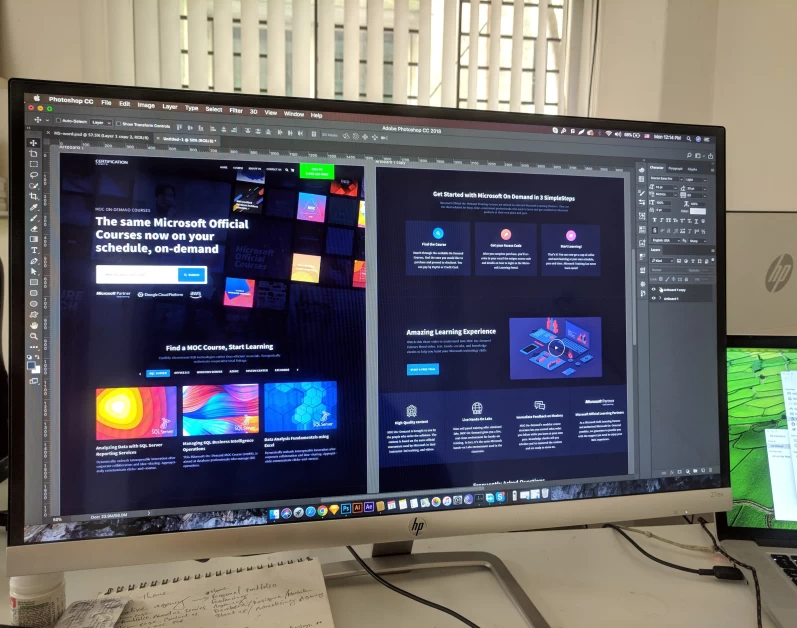Table of Contents
Introduction
When designing a website, it’s important to follow certain actions to ensure its success. This article will guide you through the process of designing a website, from defining its purpose to choosing a web hosting service, designing the architecture, creating content, and launching your website. By following these steps, you can create a website that meets your unique needs and style.
Define the Site’s Purpose
Before you start designing your website, it’s crucial to define its purpose. Consider who your audience is and what you want to achieve with your website. Are you looking to increase downloads, sales, reservations, or engagements? Knowing the purpose of your website will help you create the right content strategy and choose the appropriate platform, theme, and page architecture.
Choose Your Web Hosting Service
Once you have defined your website’s purpose, you can start exploring different web hosting services. These services provide the infrastructure and technologies needed for your website to be accessible on the internet. Look for a web hosting service that suits your needs and offers features such as domain registration and customizable templates.
Gather Your Brand Elements
When designing your website, it’s important to consider your brand’s identity. Start by selecting a color scheme that aligns with your brand. Choose a primary color and one or two complementary colors to create a cohesive look. Additionally, select a text style that reflects your brand’s values and personality. Finally, incorporate relevant and high-quality images that capture users’ attention and make a positive impression.
Select a Template or Theme
Next, choose a template or theme for your website. These pre-designed layouts make it easy for beginners to create a visually appealing website. Most web hosting platforms offer a range of templates divided into categories, each with built-in features relevant to specific industries. Preview these templates to find one that suits your site’s purpose and style.
Map Out Your Site
Before diving into the design process, it’s helpful to map out your website’s structure. Visualize the pages that will appear on your site and how they will link to each other. This will serve as a guide when designing each part of your website.
Design Each Site Element
With your template or theme and website map in hand, you can start designing each site element. This includes elements such as the menu, header and footer, and search bar. These elements help structure your website and make it easy to navigate.
- Menu: Ensure your menu is accessible on every page and displays only a few items to avoid overwhelming visitors.
- Header and Footer: Enhance user engagement by including features such as the navigation menu and your logo in the header. The footer can provide additional information such as contact details and terms of service.
- Search Bar: Place a search bar prominently on every page to allow users to find specific content quickly.
Customize Your Web Pages
Customize your web pages to suit your site’s purpose. While the content will vary depending on your specific needs, every website should have the following pages:
- Home Page: This is the landing page for visitors, so make it organized and eye-catching. Include your logo, business name, and a navigation menu to make browsing your site easy.
- Product or Service Page: Clearly communicate what you offer and allow visitors to make purchases. For e-commerce sites, create a catalog display page and individual product pages.
- About Page: Introduce yourself to visitors and highlight what sets your brand apart. Share your story, values, and any awards or recognition you have received.
- Blog Page: If you plan to use blogging as a content marketing strategy, create a page that displays snippets of your blog posts. Users can then click on posts that interest them.
- Contact Page: Provide contact information and ways for visitors to reach you, such as phone, email, or social media. Consider including a contact form and live chat widget.
Additionally, you can add pages such as a custom 404 page and an FAQ page to enhance user experience.
Test and Launch Your Website
Before launching your website, thoroughly test its loading time, content readability, linking, mobile responsiveness, and contact forms. Seek feedback from family members, colleagues, and other trusted individuals to ensure your website is ready for launch. Once you have resolved any issues, you can publish your site.
Keep in mind that website design is an ongoing process. Continuously update your website based on its performance, current trends, and business operations.
Optimize Your Content
After designing and launching your website, it’s important to optimize your content for a smooth user experience. Here are some optimization tips:
- Mobile Responsiveness: Ensure your website is mobile responsive to accommodate users on different devices. Test your website on various browsers and screen sizes to ensure optimal performance.
- Internet Linking: Use internal links to direct users to relevant pages on your website. This helps users navigate your site and establishes your authority in your industry.
- Media Optimization: Optimize your media files, such as images and videos, to prevent slow loading times and improve user experience. Use relevant and high-quality media files sparingly.
- Search Engine Optimization (SEO): Implement SEO techniques to increase your website’s visibility in search engine results. This includes optimizing images, using readable URLs, and incorporating relevant keywords.
Best Tools to Design a Website
To design your website effectively, you’ll need certain tools and apps. Here are some recommended options:
- Website Builders: Use website builders like Squarespace or Wix to easily create and customize your website.
- Design Tools: Utilize design tools like Canva for graphic design and photo editing.
- Expert Marketplaces: Consider hiring expert website designers from marketplaces like Fiverr or Upwork for design tasks.
- Logo Makers: If you need to design a logo alongside your website, try logo makers such as Logo Maker or Adobe Express logo maker.
- Photo Apps: Source visually appealing images from photo apps like Stockphoto.com or Unsplash.
By utilizing these tools, you can create a visually appealing and functional website without starting from scratch.
Conclusion
Designing a website requires careful planning and consideration. By defining your website’s purpose, choosing the right platform, gathering brand elements, and customizing your web pages, you can create a website that meets your unique needs and style. Test and optimize your website before launching it, and continuously update it based on its performance and current trends. With the right tools and resources, you can design a successful website using web hosting services.







